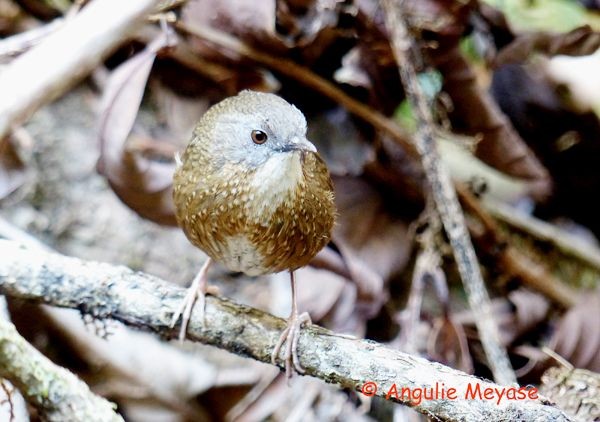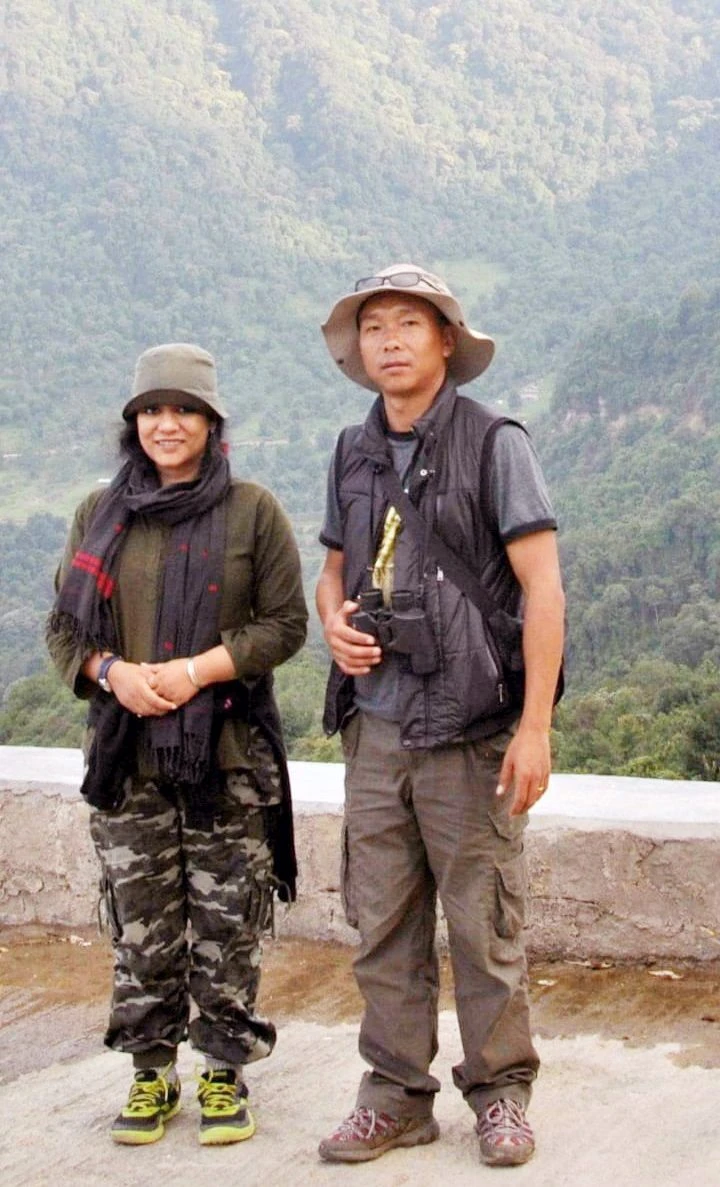Picture of a Naga Wren Babbler/Long-tailed Wren Babbler (Spelaeronis chocolatinus) taken by Angule Meyase recorded for the first time on December 28, 2005 at Khonoma. The bird has been recorded only in Nagaland till date.

Vishü Rita Krocha
Dimapur | July 24
When the birding season comes, Angulie Meyase would set out for the wild with his foreign clients as early as 4:00am in the morning and spend the entire day listening to the call of the birds and watching them. For the last ten years, he has been guiding bird enthusiasts from different parts of the world, who travel all the way to Nagaland to watch birds from October to May.
Meyase, who grew up hunting as a young boy is now passionate for wildlife conservation even as he testifies that, “once you get into bird watching with a binocular, you automatically give up the gun; you’ll never go hunting with it again.”
The only birder in the state, Angulie Meyase firmly believes that Nagaland is going to be the next big hotspot in India while pointing out that as of now it is Arunachal Pradesh.
Bird watching, he says, is the fastest growing hobby in the world. He was first introduced to it by a group of foreigners who came to his ancestral village, Khonoma back in 2007. He was a tour guide at this point of time but his deep curiosity about wildlife subsequently led him to birding.

“Earlier, there used to be only foreigners but now 50% of Indians are also taking it up as a hobby. Some of them are photographers, some do it for documentation purpose but most of them pursue bird watching as a hobby”, he enlightens.
As per his list, there are more than 500 species of birds in Nagaland with at least 340 species found in Khonoma alone. He says there are other spots for bird watching such as Intangki, Goshu Bird Sanctuary in Zunheboto, Pangti in Wokha, and Fakim Wildlife Sanctuary in Pungro. With some bird species like yellow-throated laughing thrush, moustached laughing thrush, wide-browed laughing thrush, and spot-breasted parrotbill found only in specific locations like Pungro, he has also introduced birding to some youths in the area.
“Some rare birds are found only in few places in India and 2 of them including spot-breasted laughing thrush and brown-caped laughing thrush are also found in Khonoma”, he says. Under him, some youths in Khonoma village are currently being trained for birding.
Meyase has had no formal training himself but however expresses that “I trained with the best birders in the world” while recalling that the birders who came to Khonoma during the 2005-2009 period were all foreigners and were world renowned tour guides. “I knew the birds, but didn’t know their English names”, he says looking back at his formative years of birding. Today, hearing a birdsong is enough for him to identify a bird.
Expressing his interest to travel around Nagaland to identify good spots for birding, he subsequently plans to introduce more young people to birding and teach them free of cost. Pointing at the scope that birding has in the state, he says, “I think we should start this type of activity. We all know that government jobs have reached a saturation point and birding, even in terms of business is a very big opportunity.”
Emphasizing that more people should get into it, he adds that, “it makes your mind very positive” apart from the other rich benefits.
In the next few years, he also hopes to do more of wildlife conservation while stating that, “we have very rich biodiversity and many of our wildlife have still not been documented.”






